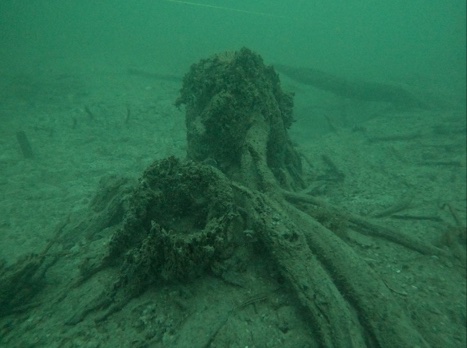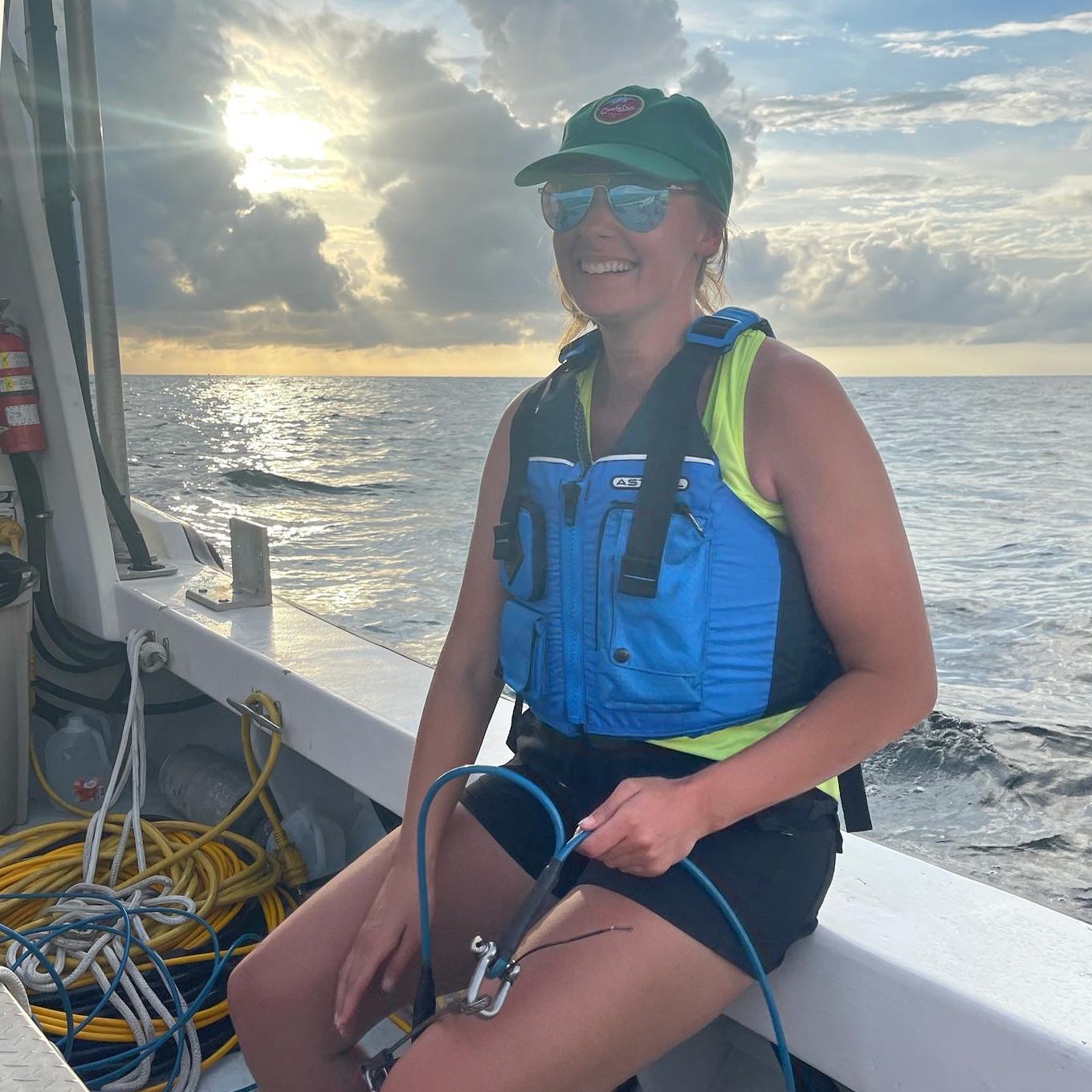LSU Researchers Discover 'Swamp Power' Preserved Ancient Underwater Forests

LSU researcher Kristine DeLong and her team discover how ‘swamp power’ preserved ancient underwater forests in the Gulf of Mexico despite rising seas, shifting coastlines and climate change
The ancient underwater forest about eight miles off the coast of Gulf Shores, Alabama, is known as a time capsule from the last ice age—and for the first time, researchers understand why. Chemical and pollen analyses found the bald cypress trees were buried in sediment from swamp and marsh ecosystems, like those in southeastern United States today. Such low-oxygen environments helped preserve the wood, which is more than 60,000 years old and grew on land at a time when sea levels were much lower than they are today. While ocean water and waves normally erode coastal deposits, the Alabama Underwater Forest, as it’s become known, was quickly buried in low-oxygen muds and sediment, forming a protective layer. When that layer was partly removed in 2004 by Hurricane Ivan, it revealed standing tree stumps at the bottom of the ocean, where few expected to find them.
In a new paper in the journal Geochemistry, Geophysics, Geosystems, LSU researcher and professor of geography and anthropology Kristine DeLong, LSU alumna Kendall Fontenot and co-authors at the University of Southern Mississippi, University of Idaho, Bureau of Ocean Energy Management and the Naval Research Laboratory share their findings, which hint at remarkable resilience of coastal ecosystems despite rising seas, shifting coastlines and climate change.
“As a marine geochemist, I look at how the chemical properties of the seafloor and subsurface interact with the marine environment,” lead author Kendall Fontenot said. “In the case of the Underwater Forest and adjacent sites, we see specific biogeochemistry alongside physical mechanisms promoting the preservation and storage of vast organic layers, which is important to consider given current and impending rising sea levels threatening coastal environments.”
Alongside the Alabama Underwater Forest, the researchers also studied ancient trees at a different site offshore in Mississippi, about 12 miles southeast of Horn Island. There, the researchers found well‐preserved pollen and woody peat deposits buried in the sea floor. These were “only” about 11,000 years old but showed similar patterns of preservation enabled by swampy conditions during the early Holocene.
DeLong and her team have been studying these underwater forests and rich natural archives since 2012. Step by step, she’s confirming her early guess that the Alabama Underwater Forest isn’t an isolated example, while this level of preservation seldom is found in marine and coastal areas.

Lead author Kendall Fontenot conducted field work for the study, revealing how initial swamp and marsh conditions preserved the ancient underwater forest off the coasts of Alabama and Mississippi, despite being underwater for thousands of years. Fontenot earned her bachelor’s and master’s degrees at LSU in coastal environmental science and physical geography and geology, respectively. While an undergraduate student, she received the LSU Distinguished Undergraduate Researcher and Distinguished Communicator medals. This fall, she will pursue a Ph.D. at the University of Washington School of Oceanography working with Assistant Professor Kendall Valentine—another LSU alumna.
“This study is an important step in understanding the conditions that led to the preservation of this ice age forest ecosystem, which will help resource managers, stakeholders and scientists find other such locations on the continental shelves of our coasts,” DeLong said.
Biogeochemical processes that promote preservation, including anoxia, or low oxygen, are innate to the Gulf Coastal Plain environments such as swamps and marshes. What gets buried in swamps in Louisiana, Mississippi, Alabama, Florida and Texas today might remain intact for thousands of years into the future, despite subsidence, erosion and rising seas.
“Snapshots of Coastal Ecology Using Multiproxy Analysis Reveals Insights into the Preservation of Swamp and Marsh Environments Since the Late Pleistocene,” Geochemistry, Geophysics, Geosystems
Latest LSU News
- Board of Supervisors Announces Presidential Search CommitteeLSU Board of Supervisors Chairman Scott Ballard announces the 2025 Presidential Search Committee.
- Krista Raney to Succeed Rob Stuart as President & CEO of the LSU Foundation Effective July 1, 2026The LSU Foundation Board of Directors has named Krista Raney to the role of president and CEO of the LSU Foundation effective July 1, 2026. Raney will succeed Robert M. Stuart Jr., who has served in the role since January 1, 2020.
- Matt Lee to Serve as Interim LSU PresidentBeginning July 1, Vice President for Agriculture and Dean Matt Lee will serve as LSU's interim president. Lee's visionary leadership for both the LSU AgCenter and College of Agriculture makes him an ideal fit to lead LSU while the search for a new president is underway.
- LSU President William F. Tate IV Accepts Presidency at Rutgers UniversityLSU President William F. Tate IV announced Monday that he has accepted the role of president at Rutgers University and will conclude his service at LSU on June 30, 2025.
- Trey Jones Named LSU Vice President of Legal Affairs and General CounselCarlton "Trey" Jones, III has been named Vice President of Legal Affairs and General Counsel. A seasoned legal professional and proud LSU alumnus, Jones brings over two decades of experience in higher education law, litigation, and institutional governance to the university's executive leadership team.
- LSU Names Russell Crook Dean of the E. J. Ourso College of BusinessLSU has named Russell Crook the dean of the E. J. Ourso College of Business, effective July 28, pending approval by the LSU Board of Supervisors. A distinguished scholar and proven leader, Dr. Crook brings over two decades of experience in higher education and business to the role.











